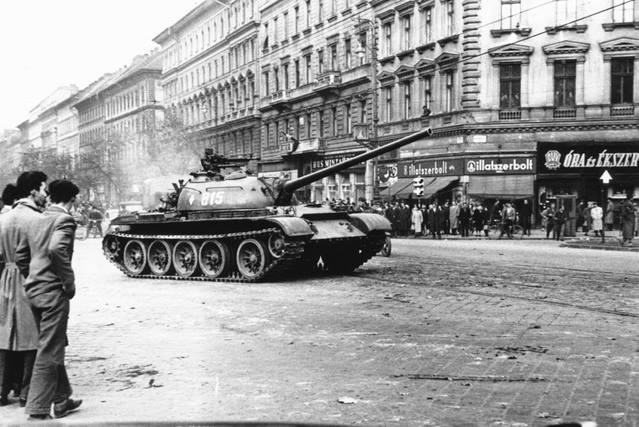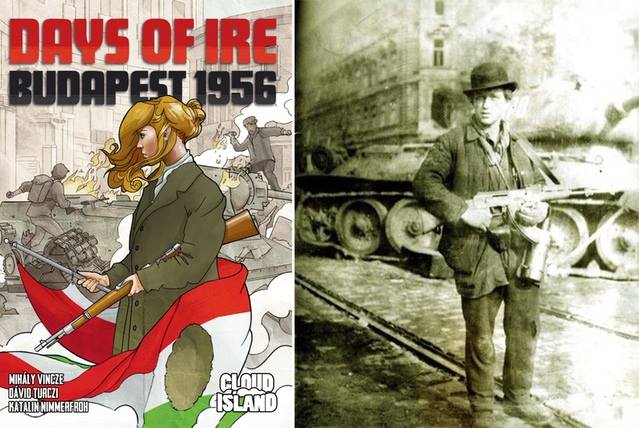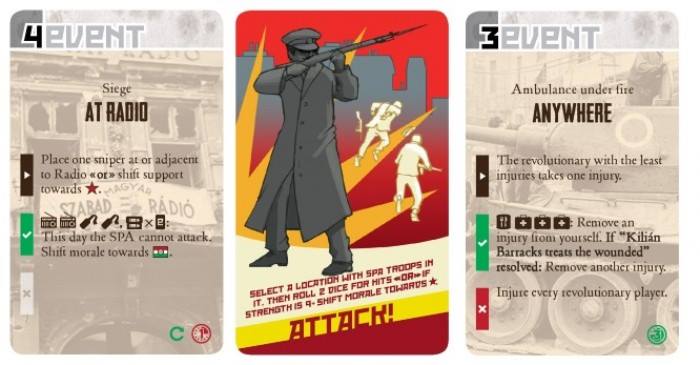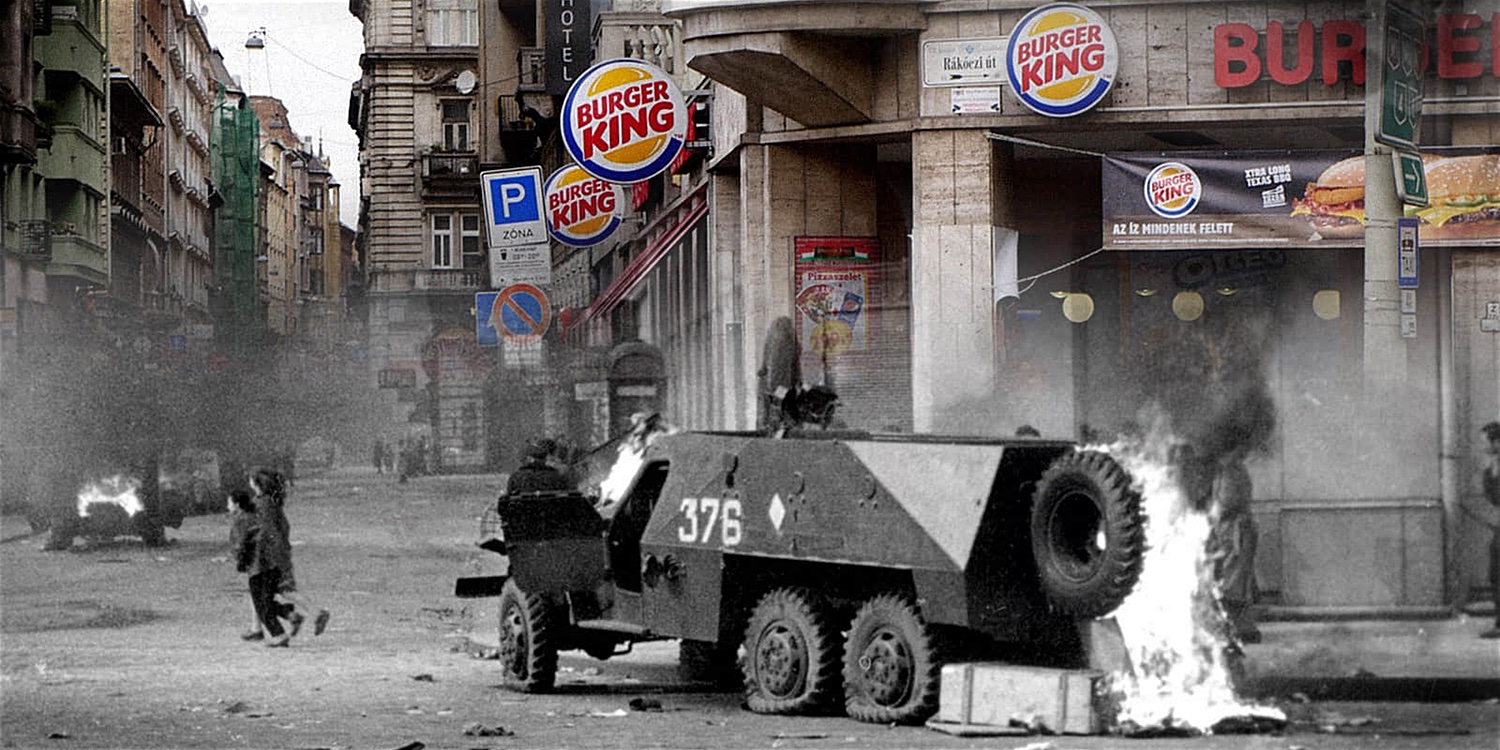As part of our November Spotlight on Days of Ire, we strive to inform readers of little extra tidbits surrounding the game. Games are made by people, and one of those tidbits we enjoy is learning a little bit more about the people behind them. Some designers shy away from the public stage, while others enjoy being front and center.
In the case of Days of Ire: Budapest 1956, trying to nail down all of the various parties involved was a bit like piecing together parts of history itself. Which is only fitting really. Due to a bit of sleuthing though we were able to locate the game’s designers for a walking history tour. This includes the likes of David Turczi, Katalin “Kate” Nimmerfroh, and Mihaly “Mityu” Vincze, a trio who happened to be well suited to tackle reconstructing the events of the Hungarian Revolution. It was a tumultuous event in the early years of the Cold War and the first real test against the iron fist of Soviet dominion. It was a real life David & Goliath story of everyday people – college students, professionals, intellectuals – trying to dislodge an empire before it was too late. And for a few short days, it almost worked.
That is what the designers captured with their efforts in Days of Ire – the initial rebellion all those years ago. In this game, one player acts as the Soviet forces trying to maintain control of the city and stamp out insubordination while the others are revolutionaries staging a block-by-block turf war with Soviet forces, trying to disrupt and liberate their capital. It only lasts seven days, so time is short and options dire.
The actual events saw the Soviets put a stern end to the actions depicted some 60 years ago after just a couple weeks. Hence why in this game the focus is on the initial rebellion, for hope springs eternal. Here you are presented the scenario where the Hungarian forces can emerge victorious, without getting tangled up in that whole historical accuracy thing.
That, and it would be kind of a boring game if you always knew your side’s outcome was always predetermined.
Admittedly, even for history fans such as ourselves we were unfamiliar with this particular bit of brave defiance to occupation, one that certainly deserves to be remembered. And what better way than in a game? We desired to learn more about how the game’s theme and mechanics game to be, as well as the motivation behind such an endeavor. Getting all three for the needed intel proved to be a bit of a challenge, but our underground network managed to make contact all the same and they were happy to share their thoughts. Just don’t tell Premier Bulganin what you see here. Enjoy!
Round One Questions
CR: What was your Gateway Game?
David: I started playing Munchkin at university, then got Battlestar Galactica because I loved the TV series. Then following BSG I found out there are other “good” games, and then never looked back...
Kate: What Dave said. We discovered the world of board games together.
Mityu: My family have played lots of traditional card games and board games (Chess, etc.). However the first time I really wanted to play a specific game was when I asked for Risk for Christmas. It felt like playing a serious game.
CR: What was the last game you really enjoyed playing (besides Days of Ire)?
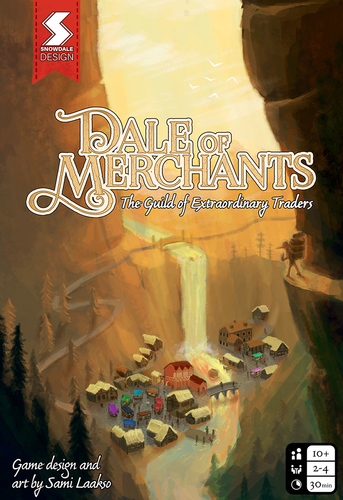 Mityu: Dale of Merchants.
Mityu: Dale of Merchants.
Kate: Project Elite. I also love Imperial Assault, but I got frustrated with it lately because I am on a streak of losing...
David: Right now I’m crazy about Terraforming Mars. In recent years my “hits” were Hyperborea, Concordia, Quartermaster General.
CR: How big is your game collection?
David: According to BGG, around 160 games.
Mityu: I’m not even sure I have a collection. Most of the games I have are either shared with someone or outright borrowed. Right now there are around 12 in my room.
Kate: 1.5 bookcases. I’ve never actually counted. BGG says 61, but I don’t think my list is up to date…
CR: What is your favorite type of game to play?
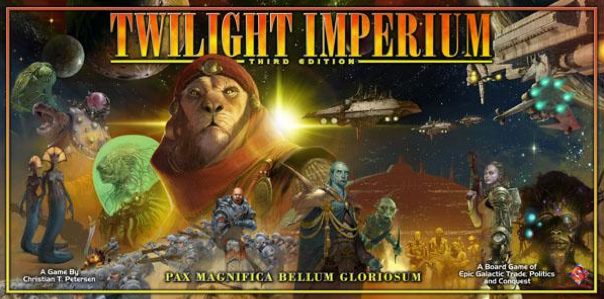
All day strategy you say…
Kate: I like quick, fun party games and epic all-day strategy. I don’t mind if a game is very abstract or has lots of text on cards, as long as it is fun to play. I also like miniatures!
Mityu: I don’t really have a specific favorite type, but it should have some sort of a spatial element to it – either area control, moving units, pattern building or something like that.
David: Mid to heavy Euros, dripping with theme, with reasonable amount of player interaction. Should reward repeated plays, but newbies should feel like they’re playing too (even if they lose!).
CR: How do you feel about Monopoly?
Mityu: It usually comes up in philosophical debates about board games. I enjoy those.
Kate: I…I’ve never actually played Monopoly…
David: Even as a child I more often played Stratego than Monopoly, but I guess it was okay then. Would you like to drive a Ford T model? No, right? That doesn’t mean you can’t acknowledge its place and importance.
On Days Of Ire
CR: Days of Ire focuses on a very specific event in history. What was the inspiration behind making a game with that theme?
David: We were asked to do this! All three of the designers are Hungarian, and when our first game [Redacted] came out we were the first Hungarians on the “major league” international board game scene. So we were the first to come to mind when a group of historians at a culture institute (working for the Hungarian Embassy in Poland) wanted a board game for the 60th anniversary of 1956.
CR: Did the theme of the game come first or the mechanics of it?
David: We sat down, trying to “cherry pick” mechanisms that would fit the theme, and then we worked on improving, smoothing, and balancing the mechanisms in order to make it a better game.
CR: Although the real revolt only lasted a few weeks, we’re sure you weren’t able to include everything from that event in the game. Was there anything you wanted to include but ended up choosing not to, for one reason or another?
David: The initial fights lasted seven days, after which there was a cease fire. That cease fire ended when the Soviets invaded again, retaking the country and snuffing out the remaining resistance. This “Empire Strikes Back” moment has been deliberately left out of the scope of the game, where the game ends if you live as far as the cease fire. But this was more of a choice, to avoid fake history endings or guarantee a downer. Maybe if (when?) we have a sequel, we can show the more war-like side of the fighting. We also tried to keep the number of pictures showing brutally murdered people (on either side) to a minimum.
CR: Similarly, which fact or element of the real life events were you happiest or proudest to work into the game somehow?
David: There isn’t a huge or significant thing in the game like that. The first events and elements were easy to fit, and then it became gradually harder when we needed to take game balance into account. In general we are happy that we managed to do it in the end.
CR: Days of Ire is card driven, not unlike several other games in the conflict genre. What would you say is this game’s twist on that mechanic?
David: If you refer to the Soviet player’s Twilight Struggle-esque CDG (Card Driven Game) mechanism, my answer is this:
There are no opponent cards to manage. You can discard any number of Hungarian events, but if you do, will you have enough CP to spread enough events?
CR: The game focuses on asymmetric gameplay between the Soviets and the Hungarians. What were some of the challenges to make sure each side felt balanced and competitive between the two?
David: The two sides have entirely different randomness to it. The Soviet knows all the cards coming but has to roll a die every now and then. The Hungarian’s actions always succeed, but will they have the card they need? We needed to keep both randomness’ swingyness low enough that even the worst case game is fun for both sides. At one point we changed the starting location of ONE unit by one square, thereby eliminating a dominant opening strategy. The little nuances…
CR: Based on the way it’s named, are there any plans for additional ‘Days of Ire’ titles? Is this the first in a possible series?
David: I would say yes. We have notes for at least one more game set during the Hungarian Revolution, then we’d like to explore other “unusual” military conflicts that could be modeled with asymmetric card play.
CR: Finally, we’re curious: have you ever visited any of the real-life settings in Budapest?
David: I’m from Budapest. Putting the map together was a special kind of fun!
Kate: I’ve visited 8 out of the 11 game locations just last week...
Mityu: I lived in Budapest for a few years, so yeah, I visited maybe not all but most of them at some point. It was a unique experience to look and old photos and draw the old faces of places and buildings that I know in the present Budapest.
Pssst. Hey…yeah you. Come over here…
Yeah, this way…
Come on…
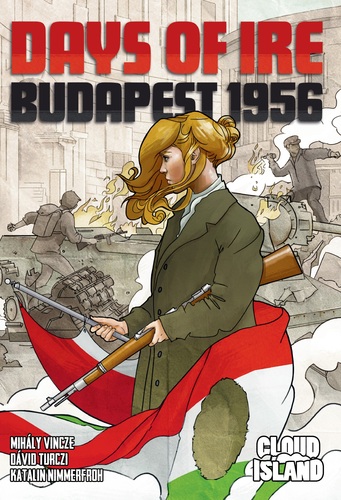
Look, we know things don’t look that great right now, but we’re trying to fix things. That’s where you come in. There’s a chance we may be able to fight back against the forces that have overtaken the capital if we move quickly, but we’re going to need your help. Are you in?
We have it on good authority you can be trusted and you’d be a real asset to the cause. We won’t force you of course, but if you walk away now we’ll deny this conversation ever took place. You know how it is.
We’re almost ready to retake our country. And we can quickly get up you up to speed with our plan of action, cleverly disguised as a board game.
Well? What say you? There’s no time to waste!
Photo Credits: Days of Ire cover and photos by Cloud Island Games; Budapest Anniversary by Radio Free Europe.

